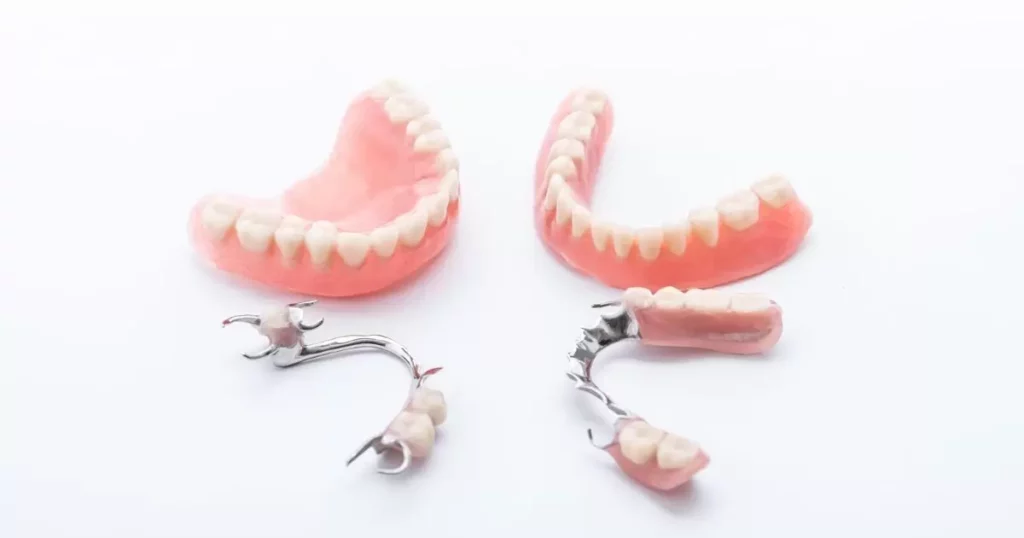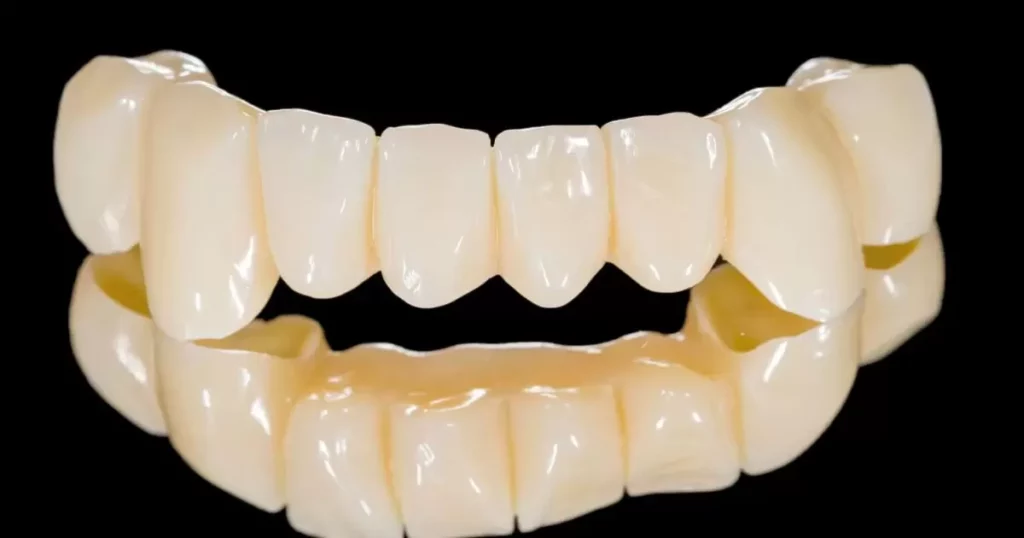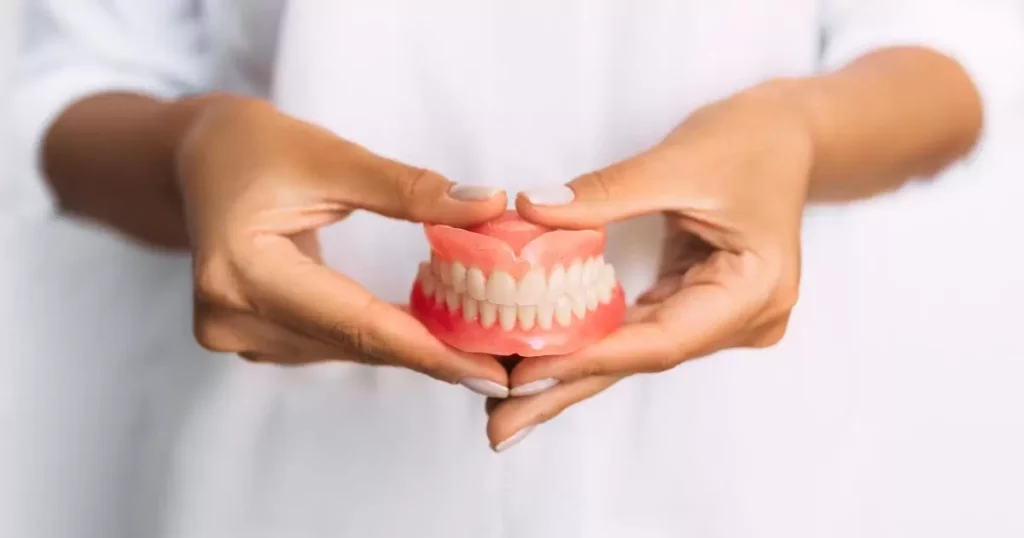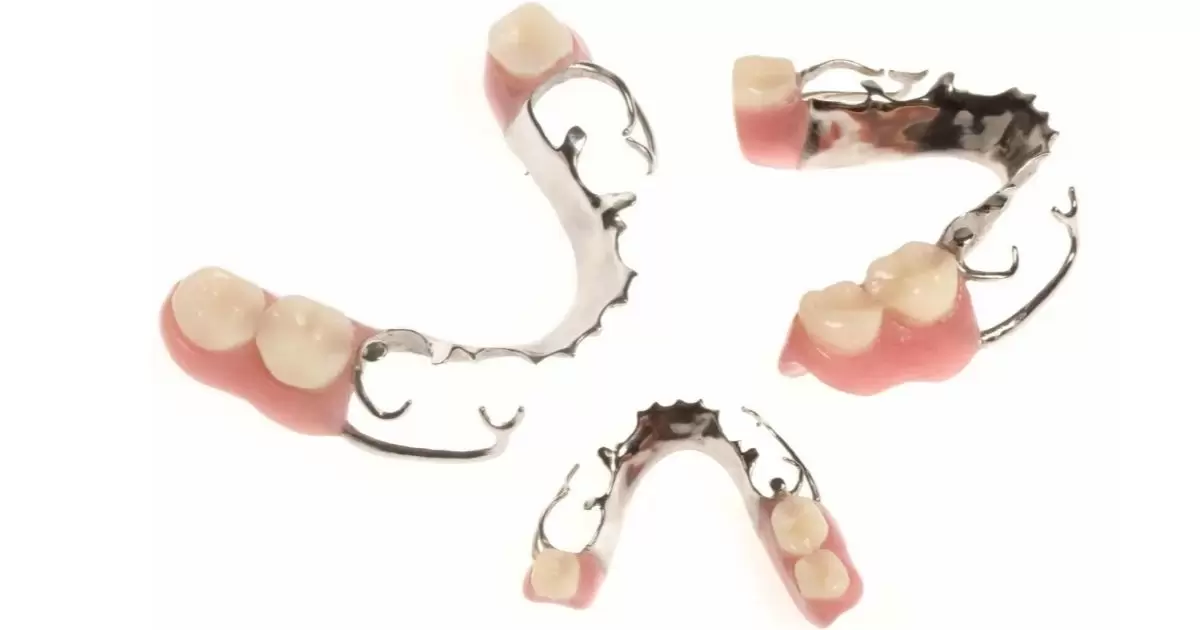A partial denture and a dental bridge are both solutions for replacing missing teeth. A partial denture is a removable appliance that replaces a few missing teeth, attaching to existing teeth with clasps. On the other hand, a dental bridge is a fixed prosthetic device that replaces one or more missing teeth by anchoring to adjacent natural teeth or implants. The choice between them depends on factors like oral health, budget, and personal preference.
Are you grappling with the decision of replacing missing teeth and wondering, “Which Is Better: Partial Denture Or Bridge?” The answer lies in understanding your unique needs. Picture a future where you confidently smile, eat, and speak without hesitation. Discover the ideal solution that suits your lifestyle and budget. Take the first step towards a brighter, more comfortable tomorrow – the choice is yours
Choosing between a partial denture and a bridge depends on individual needs. A partial denture is a removable option, securing to existing teeth, while a bridge is a fixed prosthetic device anchored to adjacent natural teeth or implants. Factors like comfort, cost, and lifestyle preferences play a crucial role in determining which option is better for replacing missing teeth.
Understanding Partial Dentures

Partial dentures are removable dental appliances designed to replace missing teeth. These prosthetics consist of replacement teeth attached to a pink or gum-colored base, which blends with the natural oral tissues. Unlike full dentures, partial dentures are used when some natural teeth remain, providing an affordable and non-invasive solution for restoring a complete smile.
It’s essential to be aware of the disadvantages of partial dentures. These may include potential discomfort, adjustments needed for proper fitting, and the necessity for meticulous cleaning to maintain oral hygiene. Understanding both the benefits and challenges ensures individuals can make informed decisions about their dental care.
Understanding Dental Bridges

Dental bridges are custom-made prosthetic devices designed to replace missing teeth. Unlike dentures, bridges are fixed in place and supported by adjacent natural teeth or dental implants.
These restorations restore both function and aesthetics, providing a stable and natural-looking solution for those seeking to replace one or more missing teeth. Understanding dental bridges involves recognizing their various types, such as traditional, cantilever, Maryland, and implant-supported bridges, each tailored to specific patient needs.
Factors Influencing the Choice
The decision to choose a denture is influenced by various factors. Oral health assessment plays a crucial role, as it determines the type of denture suitable for an individual. Budget considerations, aesthetic preferences, and the longevity of the restoration also weigh in, making it a personalized choice based on unique needs.
Pros and Cons of Partial Dentures
Here’s a simple table outlining the pros and cons of partial dentures:
| Pros of Partial Dentures | Cons of Partial Dentures |
| Affordable option | Potential stability concerns |
| Removable for easy cleaning | Regular adjustments may be needed |
| Non-invasive procedure | Maintenance challenges |
| Quick and simple fabrication | Impact on adjacent teeth |
| Variety of material options | May affect speech initially |
Pros and Cons of Dental Bridges
Here’s a simple table outlining the pros and cons of dental bridges and dentures
| Aspect | Dental Bridges | Dentures |
| Pros | ||
| Aesthetic Appearance | Natural look and feel. | Varies; can be customized for aesthetics. |
| Stability | High stability, anchored securely. | Some stability, varies with type. |
| Long-Term Durability | Durable with proper care. | May require adjustments over time. |
| Impact on Adjacent Teeth | Minimally invasive, preserves adjacent teeth. | May impact adjacent teeth over time. |
| Maintenance | Relatively easy to maintain. | Requires regular cleaning and care. |
| Cons | ||
| Cost | Higher initial cost. | Generally more affordable. |
| Invasive Procedure | Requires minor dental work. | Non-invasive, no dental work on adjacent teeth. |
| Removability | Not removable, fixed in place. | Removable, may affect stability. |
| Adjustment and Repairs | Minimal adjustments. | May require more frequent adjustments. |
| Aesthetic Changes Over Time | Stable appearance over time. | May require adjustments for changing oral structures. |
Comparing Stability and Comfort

When comparing the stability and comfort of dentures, stability refers to how securely the dentures stay in place during daily activities, like eating or talking. Dentures can vary in stability, with some requiring adhesives for additional support. Comfort, on the other hand, is about how well the dentures feel in the mouth. Properly fitted dentures should provide comfort, while ill-fitting ones may cause irritation or sore spots, affecting overall satisfaction and daily functionality.
Aesthetic Considerations
Aesthetic considerations in dentures are essential for a natural and pleasing appearance. Dentures are designed to mimic the look of natural teeth, ensuring a confident smile. The customization options allow for color, shape, and size adjustments, enhancing the overall aesthetic appeal and seamlessly blending with the individual’s facial features.
A well-crafted denture not only restores function but also contributes to a more attractive and natural-looking smile.
Maintenance and Care
Maintaining and caring for dentures is essential for their longevity and functionality. Regular cleaning, using a soft brush and denture cleaner, helps prevent plaque buildup and keeps them looking their best. Additionally, it’s crucial to remove dentures at night to allow the gums to rest, promoting oral health and overall comfort. Regular checkups with a dentist ensure any necessary adjustments are made, ensuring optimal fit and functionality.
Longevity and Durability
The longevity and durability of dentures depend on various factors. With proper care and maintenance, dentures can last several years. However, factors like regular adjustments, changes in oral structure, and the type of denture can influence their overall lifespan. Regular dental checkups and following recommended care routines contribute to maximizing the longevity and durability of dentures.
Affordability and Financial Considerations
Considering affordability in dental decisions comes with several benefits:
- Cost-Effectiveness: It allows individuals to choose dental options that fit within their budget.
- Financial Planning: Understanding costs helps in effective financial planning for the dental procedure.
- Access to Treatment: Affordability ensures that a broader range of people can access necessary dental treatments.
- Insurance Coverage: Awareness of financial considerations helps in utilizing insurance coverage effectively.
- Reduced Financial Stress: Knowing the costs beforehand helps in reducing financial stress associated with dental procedures.
Case Studies and Patient Experiences

Exploring case studies and patient experiences with dentures provides valuable insights into real-life scenarios. These stories showcase the impact of dentures on individuals’ lives, detailing the challenges faced and the positive transformations experienced.
From improved confidence in social situations to enhanced functionality while eating, these narratives offer a firsthand look at the practical aspects of living with dentures, aiding others in understanding and preparing for the potential adjustments that come with adopting these dental restorations.
Future Considerations and Upgrades
Looking ahead, the future of dentures holds exciting possibilities. Technological advancements in dentistry are paving the way for more comfortable and natural-looking dentures. Upgrades may include materials that mimic the strength and appearance of natural teeth, enhancing durability and aesthetics.
As innovations continue, individuals seeking dentures can anticipate a more personalized and technologically sophisticated experience, ensuring a better fit, improved functionality, and an overall enhanced oral health journey. Staying informed about these future considerations can empower individuals to make well-informed decisions regarding their dental health.
Permanent bridge vs removable partial denture
Choosing between a permanent bridge and a removable partial denture involves considering factors such as comfort, maintenance, and personal preference. Permanent bridges are fixed prosthetics that offer stability and convenience, anchored securely in the mouth.
On the other hand, removable partial dentures provide flexibility and ease of cleaning, as they can be taken out for maintenance. Ultimately, the decision depends on individual needs, oral health, and lifestyle, making it crucial to consult with a dentist for personalized advice on the most suitable option for a confident and functional smile.
Pictures of partial dentures front teeth
Finding pictures of partial dentures for front teeth is crucial for those considering dental options. These images can provide a visual understanding of how partial dentures look and fit in the front of the mouth. Whether for informational purposes or to ease concerns, exploring these pictures offers valuable insights into the aesthetics and functionality of partial dentures tailored for the front teeth.
Flexible partial dentures
Flexible partial dentures offer a comfortable and discreet solution for those seeking tooth replacement. Unlike traditional rigid dentures, these appliances are made from a flexible material that adapts seamlessly to the contours of the mouth.
The flexibility not only enhances comfort but also provides a more natural look, making them a popular choice for individuals looking for a discreet and functional tooth replacement option. With their innovative design, flexible partial dentures offer both aesthetic appeal and practicality, contributing to an improved overall dental experience for those in need of partial tooth restoration.
Frequently Asked Question
How do partial dentures differ from dental bridges?
Partial dentures can be removed for cleaning and at night, while dental bridges are permanently fixed in the mouth. Bridges are typically supported by adjacent natural teeth or dental implants.
Which is more comfortable, partial dentures, or dental bridges?
Comfort can vary from person to person, but some individuals find dental bridges more comfortable since they are fixed in place and don’t require removal for cleaning. However, others may prefer the convenience of removable partial dentures.
What factors influence the choice between partial dentures and dental bridges?
The decision depends on factors such as the number and location of missing teeth, overall oral health, budget, and personal preference. Dentists consider these factors when recommending the most suitable option for each individual case.
How do maintenance and care differ for partial dentures and dental bridges?
Partial dentures require daily removal for cleaning and should be soaked overnight. Dental bridges can be cleaned like natural teeth, with regular brushing and flossing. Both options benefit from regular dental check-ups to ensure proper maintenance and longevity.
Conclusion
when deciding between a partial denture and a bridge, it ultimately boils down to individual needs and preferences. The choice hinges on factors such as the extent of tooth loss, oral health conditions, and lifestyle considerations. Each option has its own set of advantages and considerations, making it essential for individuals to consult with their dentist to determine the most suitable solution for their specific case.
When faced with the question of Which Is Better: Partial Denture Or Bridge? there is no one-size-fits-all answer. It’s crucial to weigh the pros and cons of each option, considering factors like comfort, maintenance, and overall convenience. By seeking professional advice and understanding personal priorities, individuals can make an informed decision that aligns with their oral health goals and enhances their overall well-being.

